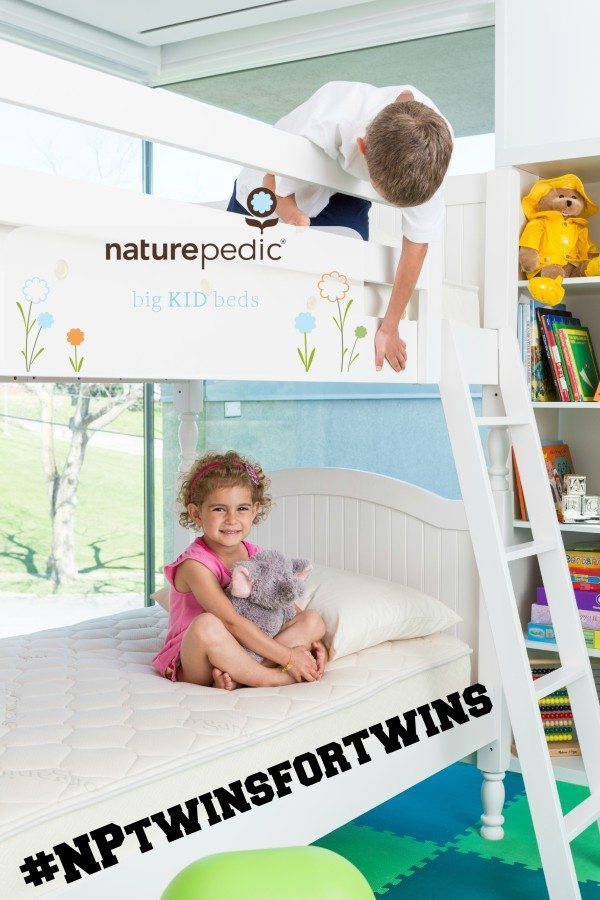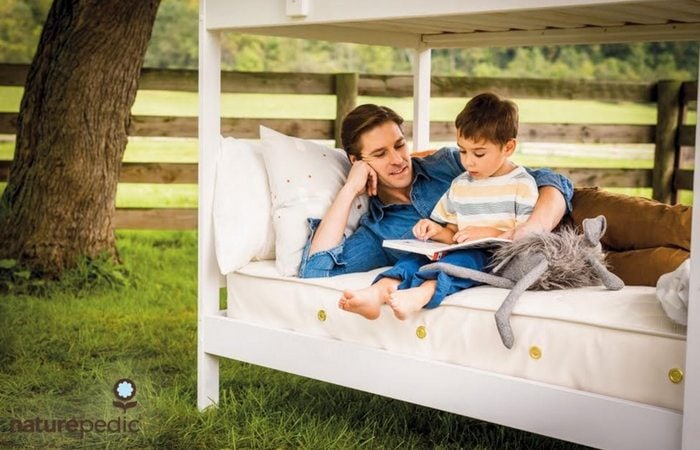Last updated on September 30th, 2021 at 10:13 am
Each child develops on their own schedule. Make sure your toddler is developmentally ready before the transition to a big bed. Switching your twins too early may result in an interruption of the night routine. It is recommended that parents should not make a change to fit their own needs, but only when the child is ready. The most common mistake for transitioning a toddler too early comes as a result of a new baby needing the crib. (If you do move your toddlers in anticipation of a new baby, it should be done 2 ½ – 3 months before the baby arrives.)
Remember that once the cribs leave the room, your safety net is gone. Your toddlers are now free to explore. Make sure they are safe. Secure furniture to the walls (or remove it completely), secure your outlets, and verify that all safety precautions are in place. If your toddlers continue to crawl out of the crib with no resolution, it is in their best interest to make the transition. Families with hard wood and tile floors should be extra careful in making sure your toddlers are secure. A 2-3 ft. fall to the floor can cause serious injury to your little ones.
Watch for these signs to help you know when to transition:
- Floor Test: Move your crib mattresses to the floor. (Nap time is a great time to test this out) If your twins adjust easily to sleeping on the mattress without emotional distress they may be ready. Some toddlers will show immediate signs of distress from the change. This will help you to identify their comfort level.
- Big Bed Request: If your toddlers start requesting a big bed, don’t ignore this opportunity. This is a sure sign they might be emotionally ready to make the transition. This is especially common in children with older siblings. They want to be big just like sister.
- Size: If your twins are tall, out of necessity they may have to transition earlier. Remember that they need to sleep safely and comfortably in their beds. The inability to comfortably roll over may interrupt their sleep routine. In addition if they are getting their legs stuck in the rails while at rest, it is now a safety issue.
- Crib Haters: If your twins dislike the crib, this might also sign that they are ready to make the change. This can often coincide with children requesting a big bed. If your twins are finding their way into your room, sleeping on the floor, under the crib, or on top of the couch; this is a sure sign they are crib haters.
- Potty Trained: If they are potty training (and night training) they will need an easy trip to the bathroom. Think about midnight and 3 AM potty breaks. Make sure that it is a safe path for twins. Night time training is easily delayed if your little ones can’t make it to the potty with ease.
Remember that even calm sleepers can be expected to fall out of bed for the first several months. If you transition to twin beds take safety precautions:
- Rails: You can purchase short or long rails, some even fold underneath the mattress during the day. Properly install safety rails following the safety recommendations. Not securing them properly could lead to the entrapment of your toddlers, and/or the rail not supporting the weight of your child.
- No Rails: If you chose to forego the bed rails, avoid using both a box spring and a mattress to lessen the distance your child will fall to the floor.
Once we purchased the twins big beds, we realized the hard part was yet to come. It was time for the actual transition. This part of the transition scared me to death. I was not looking forward to interrupting our routine and bed-time schedule. These steps helped us in a seamless transition:
Have a bedtime routine in place:
Have an established bedtime routine (such as the following) in place several weeks prior to moving them to big beds.
- Set a specific bed time and stick to it
- Give a warning and begin a countdown
- Give them a bedtime snack
- A warm bath to calm them down
- Pajamas
- Teeth brushed
- Potty
- Read books
- Sing a quiet song
- Keep your “good nights” brief








